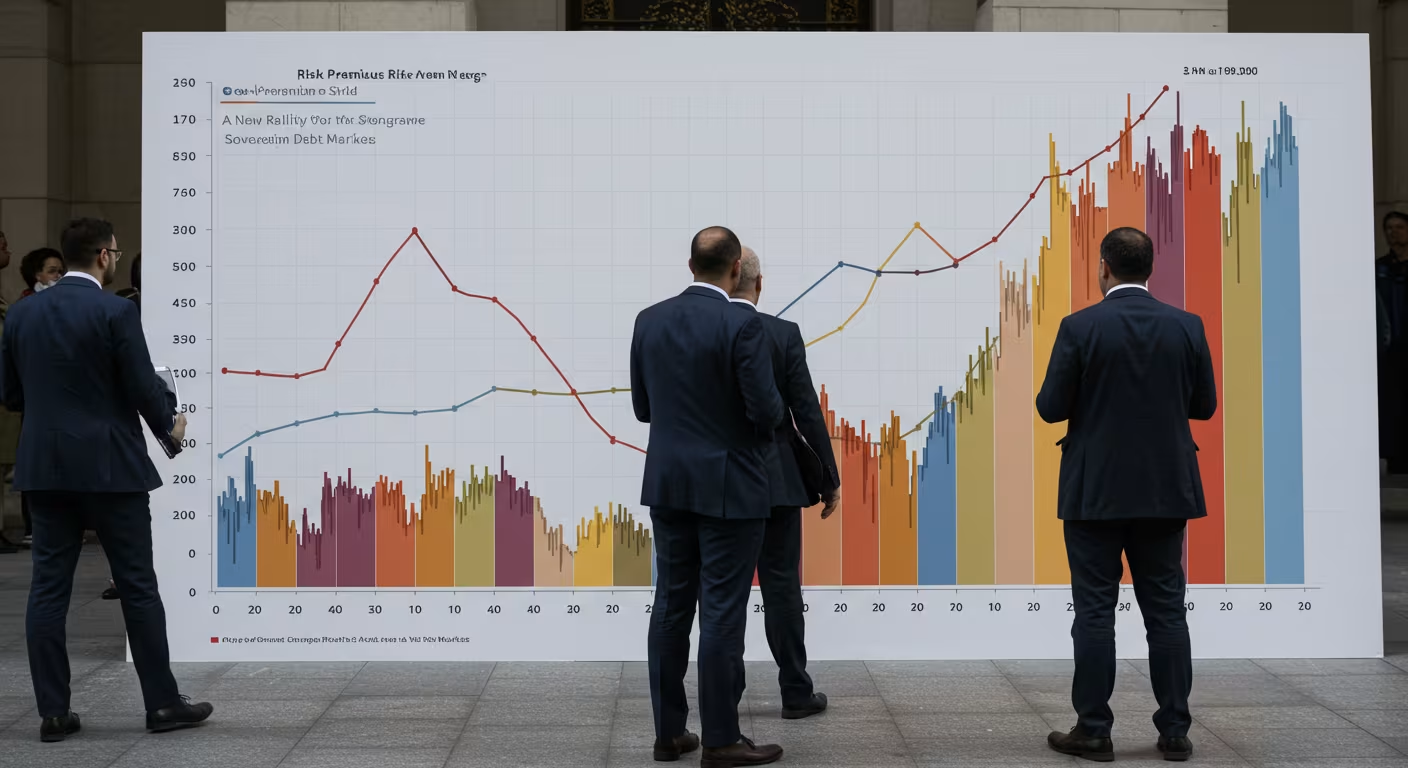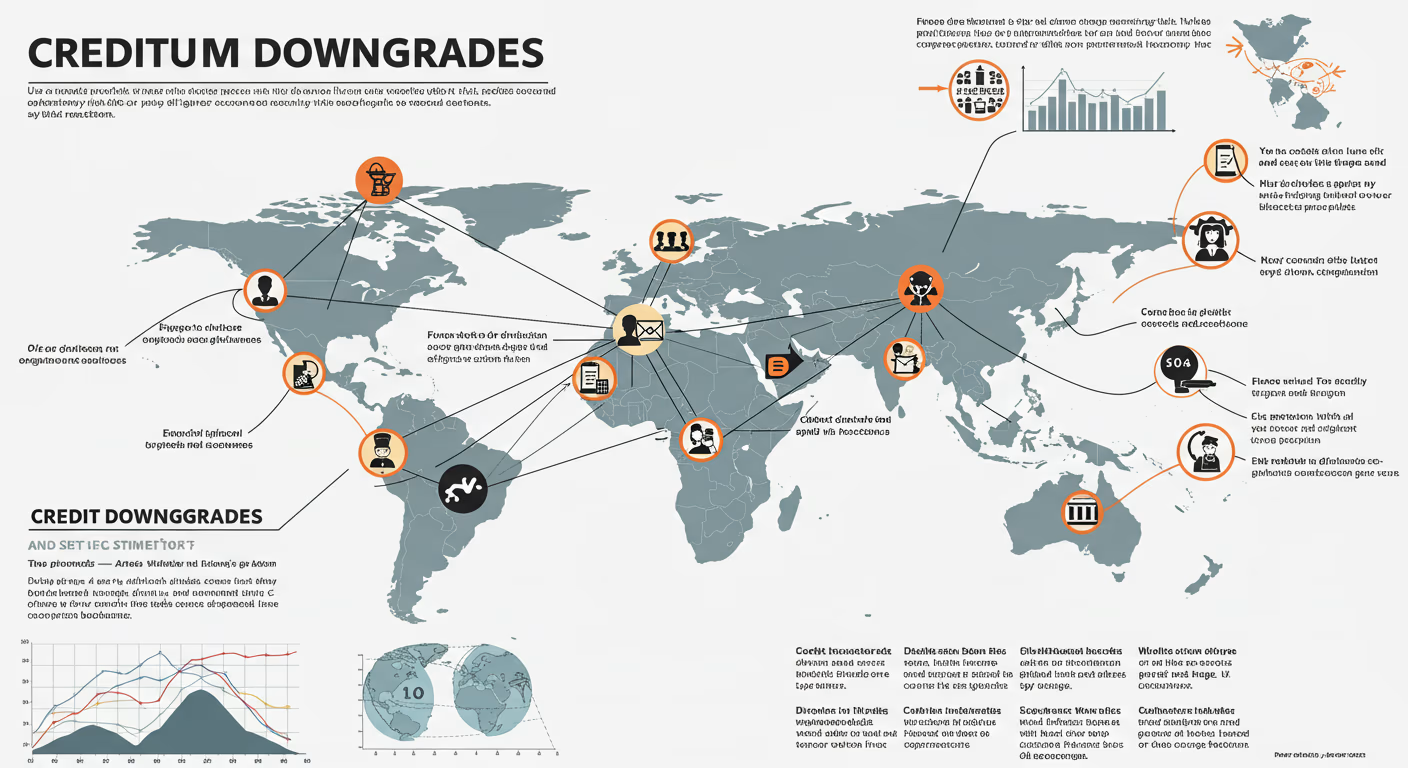In the wake of recent sovereign credit rating downgrades, particularly involving major economies like the United States, global markets are facing a subtle but significant shift—rising risk premiums. Once taken for granted, the trust embedded in high-grade sovereign debt is now being reassessed by investors, central banks, and institutions worldwide.
A credit downgrade, while symbolic in some respects, has very real financial implications. It alters investor perception, triggers risk reassessments across portfolios, and, most critically, increases the risk premium—the additional return investors demand to hold assets that are perceived as less secure.
The current market environment reveals a growing divergence between historical borrowing norms and the emerging reality of fiscal risk pricing. As sovereign balance sheets become more strained and global monetary conditions tighten, the rise in risk premiums following credit downgrades may prove to be one of the most important market stories of 2024.
Understanding Risk Premiums in Sovereign Debt
At its core, a risk premium represents the added yield investors require to hold debt with higher credit or geopolitical risk. For sovereign bonds, this is often calculated as the spread between a country’s bond yield and that of a benchmark issuer, typically U.S. Treasuries.
Historically, countries with strong institutions, sound fiscal policy, and a stable political environment enjoyed low risk premiums, enabling them to borrow cheaply. But when a credit downgrade occurs, it changes the perceived likelihood of repayment, forcing investors to reevaluate these assumptions.
Key drivers of rising risk premiums include:
- Downgrades by major rating agencies (Fitch, Moody’s, S&P)
- Fiscal deterioration and high debt-to-GDP ratios
- Political dysfunction and policy unpredictability
- Macroeconomic shocks and currency volatility
Even if actual default risk remains low, the perception of increased uncertainty can be enough to elevate premiums across the yield curve.
Recent Downgrades and Their Fallout
In 2023, Fitch Ratings downgraded the long-term U.S. credit rating from AAA to AA+, citing concerns over governance, rising deficits, and repeated debt ceiling brinkmanship. While market reaction was muted in the immediate term, investors began building in higher risk premiums, particularly on longer-dated Treasuries.
The impact has been more acute in emerging markets. Countries like Egypt, Ghana, and Pakistan have faced downgrades that triggered:
- Widening bond spreads
- Rising cost of new debt issuance
- Capital outflows
- Increased pressure on foreign exchange reserves
Even in developed markets, downgrades are reshaping the pricing of sovereign risk, nudging global portfolios toward rebalancing.
How Risk Premiums Affect Borrowing Costs
When risk premiums rise, so do borrowing costs. For governments, this means:
- Higher interest payments on new debt
- Less fiscal space for public investment
- Greater refinancing risks, especially for short-term obligations
- Erosion of market confidence, compounding the problem
For example, if a country previously issued 10-year bonds at 3% and now must offer 4.25% to attract investors after a downgrade, the cumulative cost over time can add billions to annual budgets.
In the U.S., even a modest increase in average Treasury yields adds significantly to interest expenses, which are already projected to exceed $1.1 trillion per year by 2025. The result is a feedback loop, where rising debt leads to higher yields, which in turn worsens fiscal metrics.
Investor Behavior in a Repriced World
Credit downgrades do more than just change yields—they trigger reassessments of portfolio allocations and risk models. Investors, particularly those managing pension funds, sovereign wealth funds, and insurance portfolios, often have strict mandates to hold investment-grade debt.
As ratings decline:
- Institutional investors may reduce exposure to downgraded assets
- Credit default swap (CDS) spreads increase, signaling greater hedging costs
- Risk models are adjusted, leading to sell-offs even absent fundamental changes
- Relative value shifts, leading to inflows into other sovereign markets seen as more stable (e.g., Germany, Canada, Australia)
The end result is not just a localized event—it creates global capital reallocation, affecting currencies, equities, and even commodity pricing in correlated markets.
Market Repricing: Transitory or Structural?
A key debate is whether the rise in risk premiums is a short-term reaction to political and fiscal turbulence—or a long-term structural adjustment to new economic realities.
Several signals suggest it may be the latter:
- Persistent structural deficits in major economies, especially post-pandemic
- Demographic shifts increasing pressure on pensions and healthcare systems
- Tighter monetary conditions, reducing central bank support for debt markets
- Growing geopolitical fragmentation, weakening multilateral fiscal coordination
Taken together, these forces suggest that investors may no longer price sovereign debt as a default-free asset, even for top-tier economies. This represents a profound shift in global finance.
Implications for Fiscal Policymakers
For governments, rising risk premiums serve as a market-imposed discipline. Unlike legislated debt ceilings or fiscal rules, risk premiums are set daily by markets—and they are non-negotiable.
This dynamic has several implications:
- Less room for fiscal procrastination: markets will punish delay
- Pressure to reform entitlements, taxes, and budget structures
- Need for credible medium-term fiscal plans to anchor investor expectations
- Greater transparency and communication from debt management offices
Failing to respond effectively could lead to a credibility crisis, where the cost of borrowing rises rapidly and market access is compromised.
A New Era of Fiscal Vigilance
The post-downgrade environment signals a turning point in sovereign debt markets. As risk premiums rise, governments, investors, and central banks must adapt to a world where fiscal choices have immediate and measurable consequences.
No longer can debt be treated as a limitless tool for policy expansion. The days of ultra-low interest rates masking fiscal imbalance are over. What lies ahead is an era of higher borrowing costs, greater scrutiny, and tighter margins for error.
For countries that can restore confidence through policy reform and fiscal discipline, the adjustment will be manageable. For those that cannot, the market’s judgment will come—not through political debate, but through price





